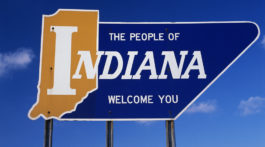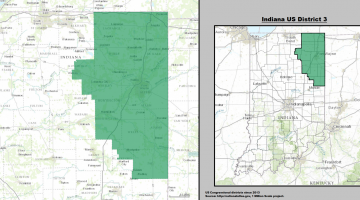by Michael Hicks, PhD
I started my academic career in coal country, working in an economic research center at Marshall University in West Virginia. It was exciting work that touched on far more aspects of the coal industry than I thought existed. Some of the best known work was with two other economists to estimate the effect of changes to environmental regulation on the communities in which coal was mined. That work made its way to Congress and to at least one Supreme Court case.
We studied ways to use coal byproducts more safely and estimated damage risk due to coal slurry impoundments for the National Academy of Sciences. Probably my most satisfying work was in designing a special reclamation fund to treat waterborne pollutants from abandoned mine lands. That work resulted in what is still the largest state environmental fund in the country.
The most interesting thing about that work was that I was invited to visit coal mines and coal mine communities across Appalachia. Now visiting mines and doing field work in communities isn’t part of an economist’s approach to research, but it was interesting.
By the time I arrived in West Virginia, coal mining employment was already more than half a century behind its peak. The introduction of machines called continuous miners and the declining use of coal for home heating cost two-thirds of all mining jobs in the decade before I was born. The energy crunch in the 1970s brought back some of these jobs, but the technological switch to surface mining eliminated another two-thirds of the remaining jobs while production rose by six-fold.
The surface mining techniques of the 1980s also opened up coal fields in Wyoming and extended the life of the Illinois basin, including mines in Indiana. That caused more production to shift away from West Virginia to these other regions. The people I met and worked with in West Virginia spoke in very different ways about the loss of these jobs.
Coal mining’s reputation as difficult, dirty and dangerous work is rooted in reality. One of my mining excursions included an hour-long ride more than a mile underground on a small coal cart. That experience alone is not for everyone. The introduction of the continuous miner machine in the 1950s brought fewer accidents, but also led to black lung disease as mine-shafts filled with dust. Few West Virginians held nostalgia for the toil of their fathers and grandfathers.
Still, miners themselves were generally proud of their occupation. They operate large, complex machinery with precision while wearing uncomfortable protective equipment in what are at best inhospitable environments. As a soldier, I recognized the satisfaction of that work, its camaraderie and the sense of accomplishment that each day brought. I fully understand why that work meant more than a paycheck and health benefits.
The job losses of the ’50s and ’90s were so concentrated that most former coal mining communities were a wreck by the turn of the century. The deep loss of coal mining jobs in the 1950s and 1980s led to dramatic population loss across much of the Appalachian coalfields. Perhaps the worst hit county was McDowell County, West Virginia, whose population dropped from just under 100,000 in 1950 to fewer than 20,000 today.
Today, McDowell County has the lowest average lifespan in the nation, with one in three residents in poverty and the labor force participation rate at 28.2 percent. There is almost exactly one job for every 10 residents. It is poorer than Mexico and with a worse prognosis.
Ironically, most of these communities weren’t booming when coal mining jobs were plentiful. The volatility of coal mining employment made investment risky, so the usual trappings of a small town were often absent. Grocers, barbers and physicians were mostly unwilling to build a business in a coal town. So, it was often left to mining firms to build their own company towns. Other industries were also reluctant to compete with mining companies, or open shop in towns where unions struggled bitterly with management.
Economists call the fate of these communities ‘The Resource Curse.’ One dominant and highly successful industry can absorb all the labor, crowding out other types of development. Today, there are almost no places dominated by natural resource extraction that have escaped this dilemma. The few good-paying jobs of today reduce the opportunity for other firms and inevitably disappear as technology or demand for their products disappear.
Coal mining jobs ebbed and flowed, but had their 21st Century peak in 2011, and have dropped by half since. We have about 44,200 coal miners in the United States. Indiana had 2,931 in 2019, a thousand fewer than in 2012. These jobs are not returning. Coal mining won’t disappear, but like everything we excel at, we will do so with fewer workers.
The United States is a young place, and many of the cities and towns born in the Industrial Revolution have lost their original economic reason for being. This is true for places that once boasted agriculture, manufacturing, mining and moving of goods. There are no longer ghost towns made in America. Social Security and the War on Poverty ensure some continuing population of places, even after their economic reasons for existing have faded. However, the future doesn’t guarantee more than that.
The good news is that economic changes have unleashed two important forces that give every place opportunity. The economy now relies on people more than anything else, and this has freed most workers from geographic constraints. This means that places that can attract people can also become the engines of an economic future. This is of course harder the farther a town is from a large urban center, or the more distressed its economy has become. But, it has a far better chance of success than yearning for a past that will not return.
Michael J. Hicks, PhD, is the director of the Center for Business and Economic Research and the George and Frances Ball distinguished professor of economics in the Miller College of Business at Ball State University. Hicks earned doctoral and master’s degrees in economics from the University of Tennessee and a bachelor’s degree in economics from Virginia Military Institute. He has authored two books and more than 60 scholarly works focusing on state and local public policy, including tax and expenditure policy and the impact of Wal-Mart on local economies.














